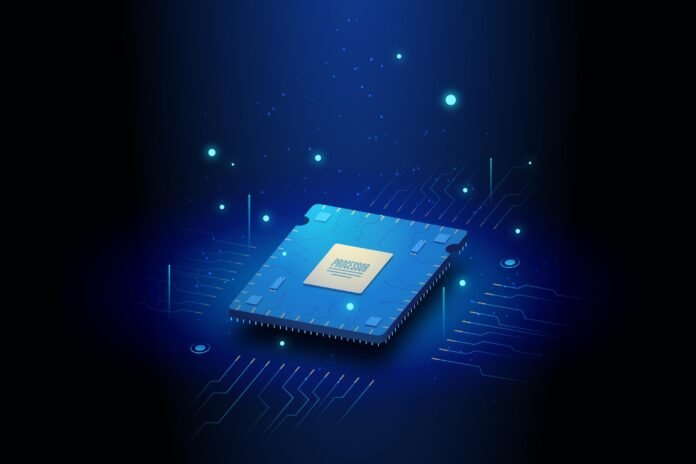While ASML was fighting to gain dominance in the chip industry by copying China, China moved one step forward, but what will happen to ASML’s plans? Well, all our dreams to compete with China will never be fulfilled, as China has made a significant breakthrough in the photolithography sector, a critical component of semiconductor manufacturing. This achievement marks a major turning point in the ongoing technological race, and it is leaving ASML in a state of concern and uncertainty. But what will be the ASML strategy?
The world of semiconductor manufacturing is currently witnessing a significant shift in power dynamics, with the Dutch photolithography giant Asml facing an unprecedented challenge from China. Asml has long held a dominant position in the semiconductor manufacturing industry, particularly with its eUV lithography machines. However, recent developments in China have raised concerns within Asml and the industry at large, leading to calls for a relaxation of export control policies in China. ASML CEO Peter Winning acknowledges the limitations of completely isolating China and emphasizes that such measures could strengthen China’s independent research capabilities.
Finally, someone has accepted that the sanctions make China stronger, but what is China’s innovative approach to photolithography technology that allows it to minimize the sanctions effect? ASML is no stranger to competition, but the rise of China as a formidable player in the semiconductor manufacturing sector presents a unique challenge. China’s investment in independent research and development, along with the rapid development of its photolithography technology, has put ASML on high alert. ASML is renowned for its extreme ultraviolet lithography machines, which are pivotal in manufacturing cutting-edge chips at the advanced 5 nanometer level. These machines have revolutionized the semiconductor industry by allowing for smaller and more powerful integrated circuits.
China’s challenge to ASML is not merely through imitation or replication; it’s about innovation and a unique approach. A new approach known as the SSNNB EUV lithography machine has been introduced. High-energy accelerators are used in this new method to group electrons into nanometer-sized groups. This makes radiation with a wavelength of 13.5 nanometers very coherent. The key advantage of the SSM-EUV technology is its ability to provide a large-scale light source for multiple photolithography machines. The SSNB EUV lithography machine innovation lies in its approach to scalability and efficiency, while AI technology has focused on the precision and miniaturization of individual machines.
China’s SSNB EUV technology aims to drive multiple lithography machines simultaneously. This approach has the potential to establish large-scale photolithography factories, a strategy that allows China to prioritize the printing process while potentially circumventing the need for highly precise components that are often challenging to produce. But what benefits does SSNB have? The SSNB EUV technology’s large accelerator light source and beam splitter can drive multiple lithography machines simultaneously, potentially increasing China’s manufacturing capacity. The approach minimizes the need for ultra-precise components that can be difficult and costly to manufacture, potentially giving China a competitive edge.
China’s approach demonstrates a willingness to explore innovative methods that align with its unique resource endowments and capabilities, allowing it to establish its own rules and technological systems in the semiconductor industry, but how is ASML in danger? ASML’s dominance in the semiconductor industry is only rooted in its near-monopoly on EUV lithography machines. EUV lithography is essential for manufacturing chips at the advanced 5 nanometer level, which is a critical requirement for the semiconductor industry. The light source and lens system parts of EUV lithography machines were mostly owned by American and European companies because they were hard for other companies to get into. Key players like Zeiss Simer and Trump played crucial roles in producing these components and have close ties to ASML, making it challenging for China to access this technology, but now they can no longer maintain hegemony. China chose to take a different route to address the problem that ASML and the West’s export controls posed, and that alternative route was SSNB.
Reports say that China’s SSNB EUV light source solution has an accelerator output power of more than 10 KW, which is 40 times that of ASML. It also uses a beam splitter, which lets it make more than one machine at the same time. While the feasibility and success of this approach are yet to be determined, it represents an ambitious experiment for China to break through the barriers in euv lithography. The evolving semiconductor manufacturing landscape highlights the increasing importance of photolithography technology. This innovative field is a cornerstone in the development of smaller, more powerful chips. China’s innovative strategy shows not only how serious they are about securing a dominant position in the semiconductor market but also how eager they are to invest in R&D, take unorthodox routes, and use cutting-edge technology.
Further, this challenge could lead to a paradigm shift in the semiconductor manufacturing industry, moving away from the traditional model of precision components and miniaturization towards a more scalable approach. As China’s progress in photolithography technology continues, it remains to be seen how this competition will reshape the industry in the future. The implications of China’s challenge to ASML and the global semiconductor industry are far-reaching, and ultimately, ASML will be one of the companies at a loss because they happen to be China’s competitors. ASML will face increased competition from Chinese manufacturers, which could potentially lead to advancements in photolithography technology and accelerate innovation.
China’s pursuit of independent semiconductor manufacturing capabilities could lead to a more diverse and competitive global market, benefiting consumers with more options and potentially driving down prices. The competition in the semiconductor sector is not just about business but also geopolitics. It highlights the importance of technological independence and self-reliance for countries, but the US is at a disadvantage in one way: the semiconductor industry relies heavily on intellectual property. As China develops its technology, the blame regarding intellectual property rights and protection will look more solid and believable. The US will be able to say that China has become a huge threat to it because of its innovations.
One benefit of China’s rise as a tech leader is that the global supply chain for semiconductor manufacturing may become more diverse as more countries and companies seek to reduce dependence on a single supplier. Also, the competition between ASML and China highlights the significance of research and development in the tech industry. Innovation will be a key driver in determining the future leaders in this field. One of the big changes we might see is how the West deals with selling advanced technology to China. This is because competition is growing, and it might make the West think twice about putting strict restrictions on selling advanced technology to China. Many people believe that the West will need China more in the future because China is becoming a leader in technology.
Competition is a healthy part of the global economy. When different countries and companies compete, it can lead to innovation and better products in technology. World competition is fierce, with countries like the United States and China striving to outdo each other in fields like artificial intelligence. 5G technology and more advanced technology are like the secret steps that make businesses and countries thrive in today’s world. They can be used in various industries, from health care to telecommunications to military defense. China has been making significant strides in technology, and companies like Huawei, Alibaba, and Tencent have gained international recognition. Chinese scientists are contributing to breakthroughs, and the country is investing heavily in research and development.
China’s economic strength and technological advancements have captured the world’s attention with their growing influence. The West is starting to think differently. They’re realizing that they may need to work with China rather than keep technology out of Chinese hands. The global economy is interconnected, and partnerships can be mutually beneficial. In the future, we might see the West and China working more closely in the tech sector. This collaboration could lead to advancements that benefit everyone We would like to take a moment here and appreciate you all for commenting and sharing your opinions your insights always impress us do you think the West would need China, but China won’t help? What will happen when the West ends up being helpless? Do you think there is a way to compete with Mighty China? Let us know in the comments section what one thing gave China superiority in the tech industry.



